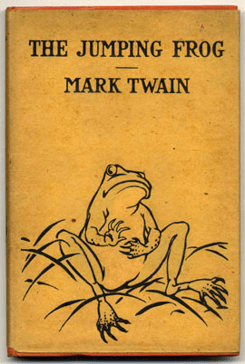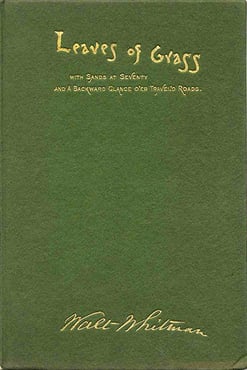There’s no clear-cut way to become a writer. A writer’s start, however, is almost always a small one. It takes a considerable amount of time to cultivate the talent that will amass attention, better pay, praise and prestige. That is, if those are the kind of things you’re into. But the road to artistic glory is necessarily a humble one. Few blossoming writers are in a position to turn down opportunities that pay and reach readers. And many times, a writer will settle for just the latter. In the end, these less glamorous ventures and gigs can prove essential to both the professional and artistic growth of the author. Let's explore how the following famous authors got their start.
Virginia Woolf
 If no one has the courage to publish your work, then publish it yourself. That was the philosophy of Leonard and his wife Virginia Woolf, whose brilliant novels failed to find a publisher. The pair bought a printing press and set up their own publishing venture in their living room, which they named Hogarth Press. The couple published Woolf’s masterful novels, such as Orlando and To The Lighthouse, as well as T.S. Eliot’s The Waste Land, among other classics of the era. Virginia declined another momentous novel, Ulysses, forcing its author into the lap of another small enterprise called The Little Review.
If no one has the courage to publish your work, then publish it yourself. That was the philosophy of Leonard and his wife Virginia Woolf, whose brilliant novels failed to find a publisher. The pair bought a printing press and set up their own publishing venture in their living room, which they named Hogarth Press. The couple published Woolf’s masterful novels, such as Orlando and To The Lighthouse, as well as T.S. Eliot’s The Waste Land, among other classics of the era. Virginia declined another momentous novel, Ulysses, forcing its author into the lap of another small enterprise called The Little Review.
Anton Chekhov
In 1880, a twenty year-old Anton Chekhov found himself responsible for supporting his family, and paying his way through medical school. To supplement his income, he began writing frequent short vignettes and humorous pieces for magazines, often under a pseudonym. Nonetheless, he began to be known as a satirist of everyday life, before his plays and short stories made him a monumental writer. A new book, entitled The Prank, came out in early 2015, compiling satirical pieces from Chekhov’s early years.
Charles Dickens
Boz is the most famous pseudonym of the author of Bleak House, taken from his baby brother’s precocious pronunciation of “Moses.” Dickens published his sketches of London life and scenes in periodicals like The Monthly Magazine, often anonymously. Naturally, intrigue mounted about who the writer was, as well as where to read more, and so Sketches by Boz came out in 1836—marking the beginning of one of English literature’s most remarkable careers.
Mark Twain
 Like Dickens and Chekhov, Twain started small. He began his career writing sketches, short stories, articles, and the like for newspapers across the country. It was in these forms that he began to cultivate his legendary humor. He was a prankster. who parodied the fatuousness of both audience and journalist. He was also a great satirist, and his breakout story, “The Celebrated Jumping Frog of Calaveras County,” poked fun at the American conception of the ever-westward, ever-independent man.
Like Dickens and Chekhov, Twain started small. He began his career writing sketches, short stories, articles, and the like for newspapers across the country. It was in these forms that he began to cultivate his legendary humor. He was a prankster. who parodied the fatuousness of both audience and journalist. He was also a great satirist, and his breakout story, “The Celebrated Jumping Frog of Calaveras County,” poked fun at the American conception of the ever-westward, ever-independent man.
Djuna Barnes
A treasure of modernism, Nightwood author Djuna Barnes wrote and worked for nearly every periodical in her creative vicinity. She worked as a reporter for the likes of the Brooklyn Daily Eagle, wrote reviews, and sometimes illustrated her own work. She conducted interviews, the most famous being with James Joyce in Paris the year Ulysses was released. Barnes even took the occasional gonzo journalism assignment. In one 1914 article, Barnes worked to better understand the plight of suffragettes fighting for the ballot, so she underwent the outrageous process officers used on prisoners engaged in a hunger strike. “How It Feels To Be Forcibly Fed,” read her provocative headline.
Walt Whitman
 With ebooks, self-publishing is as easy as ever. But Walt Whitman. who self-published his masterpiece Leaves of Grass, took on great expense to produce his poetry. The number printed was few, the number sold even fewer, but that did not bother Whitman too much. It was most important that his books would have an intimate connection to the reader; that they were portable, and easy to read in the open air. During this modest run, Whitman sent a copy to his influence Ralph Waldo Emerson, in a bold effort of self-promotion. It was a risk worth taking—Emerson loved the book, and Whitman used Emerson's praise for a blurb on the next edition.
With ebooks, self-publishing is as easy as ever. But Walt Whitman. who self-published his masterpiece Leaves of Grass, took on great expense to produce his poetry. The number printed was few, the number sold even fewer, but that did not bother Whitman too much. It was most important that his books would have an intimate connection to the reader; that they were portable, and easy to read in the open air. During this modest run, Whitman sent a copy to his influence Ralph Waldo Emerson, in a bold effort of self-promotion. It was a risk worth taking—Emerson loved the book, and Whitman used Emerson's praise for a blurb on the next edition.
Raymond Carver
Few epitomize the blue collar author archetype like Raymond Carver, who worked as a hospital janitor and bookstore employee, among other jobs. For his first writing gigs, Carver found space in magazines with the help of his creative writing professors, including John Gardner. He even ran his college’s literary magazine, publishing work under his own name and a pseudonym, presumably to appear to take up less space.









